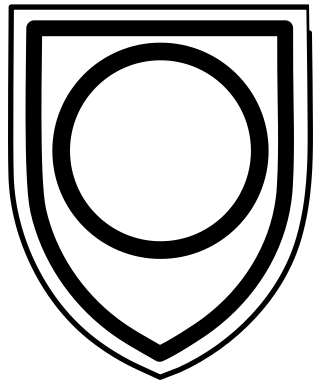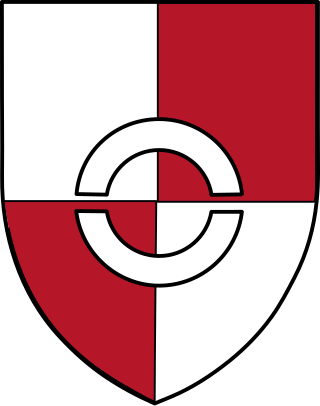The German 206th Infantry Division, was a military unit that served during World War II. Like most German infantry units it had no motorization, and relied on leg and horse mobility.

The 13th Panzer Division was a unit of the German Army during World War II, established in 1940.

The 334th Infantry Division was a German Army infantry division in World War II. Originally formed in November 1942, it surrendered to the Allies at the conclusion of the Tunisian Campaign in May 1943. The division was reconstituted on 3 June 1943 in France within the 1st Army, with the staff of the 80th Infantry Division as well as remnants of the old division and replacement units. It spent the remainder of the war serving on the Italian Front.

The 71st Infantry Division Kleeblatt was an infantry division of the German Army, raised on 26 August 1939, shortly before the outbreak of World War II, as a division of the 2nd wave of deployment by Infantry Commander 19 in Hildesheim. It fought in Verdun, Stalingrad and Monte Cassino, among others.

The 9th Panzer Division was a panzer division of the German Army during World War II. It came into existence after 4th Light Division was reorganized in January 1940. The division was headquartered in Vienna, in the German military district Wehrkreis XVII.
The 11th Panzer Division was an armoured division in the German Army during World War II, established in 1940.

The 161 Infantry Division was a major unit of the German Wehrmacht. It fought in the Battle of France, and then later on in the Eastern Front.
The 3rd Panzer Army was a German armoured formation during World War II, formed from the 3rd Panzer Group on 1 January 1942.

The 32nd Infantry Division of the German Army was mobilized on 1 August 1939 for the upcoming invasion of Poland. At that time, it consisted of the usual German Infantry Division elements: three infantry regiments of three battalions each, one three-battalion regiment of light artillery, one battalion of heavy artillery, a Panzerjäger (anti-tank) Battalion, a reconnaissance (Aufklärungs) Battalion, a Signals Battalion, a Pioneer (Engineer) Battalion, and divisional supply, medical, and administrative units.

The VI Corps was an infantry corps of the German Army. It fought in several notable actions during World War II.
The 101st Jäger Division was a light infantry Division of the German Army in World War II. It was formed in July 1942 by the redesignation of the 101st (Light) Infantry Division, which was itself formed in December 1940. The Walloon Legion was briefly attached to this division from December 1941 to January 1942. The Division took part in the Battle of Kharkov, the Battle of the Caucasus, and the retreat into the Kuban, where it suffered heavy losses fighting both the Red Army and partisans. The division was then involved in the battles in the Kuban bridgehead before being evacuated. The 101st was subsequently transferred to the lower Dnieper River in late 1943. It was part of the 1st Panzer Army that was surrounded in March 1944; it formed the rear guard for the XLVI Panzer Corps during the breakout of the Kamenets-Podolsky pocket. The division then retreated across Ukraine. In October 1944, it was moved to Slovakia and took part in the Battle of the Dukla Pass.

The 30th Infantry Division of the Wehrmacht was created on 1 October 1936 in Lübeck and mobilized on 26 August 1939 for the upcoming invasion of Poland. At that time, it consisted of the usual German infantry division elements: three infantry regiments of three battalions each, one three-battalion regiment of light artillery, one battalion of heavy artillery, a panzerjager (anti-tank) battalion, an aufklärungs (reconnaissance) battalion, a signals battalion, a pioneer (engineer) battalion, and divisional supply, medical, and administrative units.

The 15th Infantry Division was an infantry division of the German Army during the interwar period and World War II, active from 1934 to 1945.

The 389th Infantry Division was a German division of the Wehrmacht in the Second World War, which fought for example in the Battle of Stalingrad. It was formed on 27 January 1942 in Milowitz.

The 82nd Infantry Division was a German Army infantry division in World War II. The 82nd was part of the sixth Aufstellungswelle of German infantry divisions.

The 387th Infantry Division was an infantry division of the German Army during the Second World War, active from 1942 to 1944. It saw active service on the Eastern Front and was destroyed in fighting in Romania in August 1944.

The XXIV Army Corps was a unit of the German Army during World War II. The unit was re-designated several times; originally being Generalkommando der Grenztruppen Saarpfalz, later Generalkommando XXIV. Armeekorps, then XXIV. Armeekorps (mot.) and finally XXIV. Panzerkorps.
The 387th Rifle Division was raised in 1941 as an infantry division of the Red Army, and served for the duration of the Great Patriotic War in that role. It began forming on September 1, 1941, in the Central Asia Military District. It first served in the winter counteroffensive south of Moscow, then spent the spring and summer of 1942 on the relatively quiet fronts southwest of the capital in the area of Kaluga and Tula. In September it was withdrawn to the Reserve of the Supreme High Command where it joined the 1st Reserve Army. This became the 2nd Guards Army and the division fought south of Stalingrad against Army Group Don during the German attempt to relieve their encircled 6th Army in December. During January and into February, 1943, 2nd Guards advanced on both sides of the lower Don River towards Rostov in a race to prevent Army Group A from escaping being trapped in the Caucasus region. The division was now part of Southern Front and it would remain in that Front until May, 1944. During the summer advance through the Donbas and southern Ukraine the 387th served under several different army commands before returning to 2nd Guards for the Crimean Offensive in April, 1944, during which it won a battle honor. After the Crimea was cleared the division remained there as part of the Separate Coastal Army until it went back to the Reserve in March, 1945. It then was assigned to the 2nd Ukrainian Front as a separate rifle division, and spent the last weeks of the war in Hungary and Austria. It continued to serve briefly into the postwar period.
LVII Panzer Corps was a panzer corps in the German Army during World War II.
The 298th Infantry Division was an infantry division of the German Heer during World War II.













